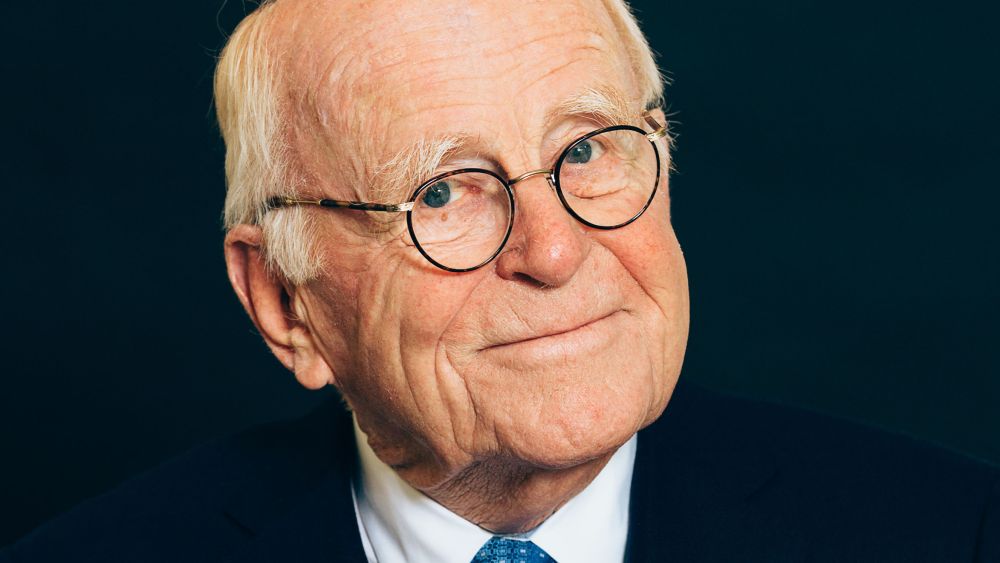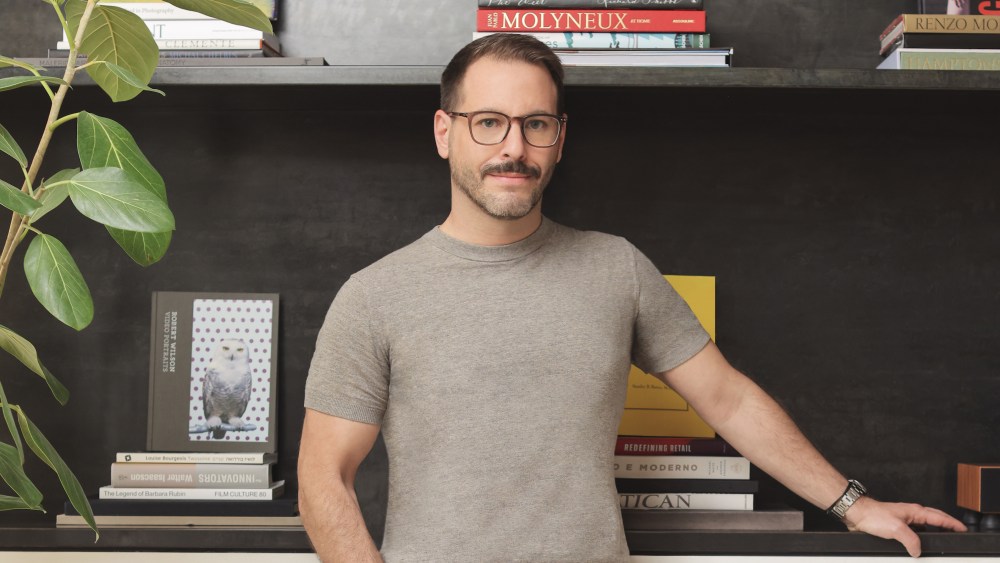Bruce Nordstrom, standard-bearer of Nordstrom Inc.’s reputation for service, quality and footwear who led the Seattle-based retailer for four decades, died Saturday at the age of 90.
The self-proclaimed “shoe dog” managed Nordstrom Inc. through its impressive national expansion as well as through periods of business highs and lows. He also oversaw the launch of the first Nordstrom Rack off-price store.
“Mr. Bruce,” as he was affectionately known to his team, started his storied career at age nine, working at the family store which at the time specialized in shoes before eventually evolving into an upscale department store. His love for his family defined his life and his work. His grandfather founded the business.
“It is with deep sadness we announce our dad passed away comfortably at home on May 18, with his wife Jeannie by his side,” said Pete and Erik Nordstrom, the sons of Bruce, and respectively the president and chief executive officer of Nordstrom Inc., in a joint statement Sunday.
“Our dad will be remembered not only for his significant contributions to Nordstrom, but also for his unwavering dedication to his family and friends,” Erik and Pete added. “His passion, integrity and tireless work ethic served as an inspiration to everyone around him. But perhaps his greatest achievement was being an amazing father, husband and grandfather. Our dad leaves a powerful legacy as a legendary business leader, a generous community citizen and a loyal friend.”

“Bruce was truly instrumental in establishing the Nordstrom brand and what the Nordstrom name stood for, like how Stanley Marcus established the Neiman Marcus brand,” said Allen Questrom, another legend in the retail industry and the former CEO of Federated Department Stores, JCPenney, Neiman Marcus and Barneys New York.
Questrom recalled that when he was running the Bullocks regional department store chain in California, which eventually merged into Macy’s, a major Nordstrom store moved into South Coast Plaza, the regional mall in Costa Mesa, Calif. Around the time of that opening, Questrom visited the new competitor in the mall and realized what he was up against.
“I was very impressed by the shoe assortment, the merchandising, and that the sales associates really knew all the products. I was also impressed by the fact that they were merchandising by store, more locally, and giving the store manager lots of say in the matter. Nordstrom was not so centrally merchandised. You felt this could be a successful retail brand on a national level.”
“I knew Bruce well. He was one of the nation’s great merchants and was one of the last of the department store legends,” said Gilbert Harrison, chairman of the Harrison Group and founder of Financo Inc. “He was responsible for the tremendous growth Nordstrom experienced through the U.S. He understood the growth opportunities and took advantage of where the opportunities were. He found sites that would be beneficial to the Nordstrom customers. He knew how important the shoe business was. He promoted service, and I’d say he took care of everything.
“He loved the business and loved that it was a family business,” Harrison added. “He groomed his sons, Erik and Pete, to continue in his legacy, and especially Blake, who unfortunately passed away.” Blake died in 2019 and preceded Erik as Nordstrom Inc. CEO.
Jeffrey Kalinsky, a former executive vice president of Nordstrom who became instrumental in helping the retailer develop its designer assortments, said Sunday of Bruce, “I loved him. He was a great man. He made everyone feel important, valued and listened to. His legacy, I would imagine, is immense. He was a true retailer and a true merchant, and he believed the customer was always first. Everything that he believed, in my opinion, is the perfect handbook and he followed those lessons into his life.
“His wife Jeannie and Bruce used to call me and sing ‘Happy Birthday’ on my birthday,” Kalinsky recalled. “He was truly a great man and a great leader. I don’t have enough good things to say about him. They were just really supportive. When I was in Seattle, we would have dinner. They just treated me as a member of the family, and I wasn’t the only one.”

Bruce Nordstrom was the grandson of the company’s founder, John Nordstrom, who immigrated from Sweden to the U.S. at the age of 16. As the story goes, the young John Nordstrom first arrived in Minnesota in 1887 with $5 in his pocket, and worked in various areas of the country until settling down permanently in Seattle. He built up some savings, partly by prospecting for gold in Alaska in the late 19th century. Upon returning to Seattle, he opened a shoe store in 1901 with Carl Wallin, a shoemaker that he met in Alaska. The store took off right from the start, registering $12.50 in shoes on Day One.
Over the years, additional shoe stores were opened. The company survived the Great Depression and World War II and, eventually, seeing the need to diversify, purchased Best Apparel, a Seattle-based women’s clothing store, in the early 1960s, putting the company on an accelerated growth path. In 1967, when annual sales reached $40 million, the chain’s name was changed to Nordstrom Best. In 1971, the company went public, and two years later, topping $100 million sales, the company officially renamed itself Nordstrom Inc.
In 2018, during an interview a few months before he received the Lifetime Achievement Award from WWD’s sister publication Footwear News, Bruce admitted that being in the business wasn’t a mandate for the third-generation Nordstrom.
“My daddy [Everett] said, ‘If you don’t want to do this, go do something else,’ but I never did,” said Bruce at the time. “It was the Second World War, and I was sweeping floors, emptying shoeboxes, breaking them up, flattening them and tying them into bundles. It was hard work, as I was a skinny little guy.”
That skinny kid, who “absolutely loved” retail and its simplicity at the time, inherited a tireless family work ethic. In fact, he used a 30-minute lunch break to propose marriage, at age 23. Bruce told his bride-to-be that his work was all-consuming, and the proposal came with a telling disclosure. “We decided to get married, but I told her I didn’t have much time off to do so. Maybe two weeks.”

To her credit, Fran was undeterred, allowing Bruce to dedicate hundreds of hours to the family company as his own family grew at home. “She was really something,” Bruce had said of his late wife. “She raised our boys beautifully and was up for whatever it was.”
Driven and detail-oriented, Bruce was asked to be president of the company at 30.
“I felt like a lost dog in the tall grass,” he said. “But we were a much smaller company in those days, just a couple hundred employees and a few shoe stores in Portland [Ore.] and Seattle.”
Almost immediately, his father and Uncle Elmer retired — and Bruce was left to determine his path.
Wisely, he turned to “Uncle” Lloyd Nordstrom (chairman at the time) for guidance. Lloyd suggested he visit a friend, the late Stanley Marcus of Neiman Marcus fame, in Texas.
“Stanley said he would love to have me down, and I jumped at the chance,” Bruce said. “They let me see everything, and I even ate in the executive dining room. They couldn’t have been nicer.”
Uncle Lloyd also suggested a trip to New York City to meet with buyers and brands. “I didn’t know anything, so I asked a lot of questions,” Bruce said. “I called on a lot of vendors and got to know what they thought. I did that for a couple of weeks, and I learned a lot.”
But specific advice was sometimes hard to come by. “I learned the most from my dad, but you had to know him,” Bruce said. “He was smart, but he didn’t want to interfere with anything. When I was made president, he almost stopped coming to the store. It was a sink-or-swim deal for me.”
Now with his own sons at the helm, Bruce acknowledged that he still liked to “go around and ask about everything….I [would] get to know the store manager and look around different departments. Of course, I can’t know everyone now, but they know Mr. Bruce. I’m walking around in their way all the time.”
Amid a period of great growth, Bruce and team took the company public in 1971, debuted the first Nordstrom Rack in 1973, and continued expansion throughout the U.S., in particular during the growth years throughout Washington, Oregon, Alaska and California, when Bruce led the business, before he officially retired in 1995.
His retirement was somewhat short-lived, though, as he returned to the chairman role in the year 2000 during a rocky time for the company — and then he retired for good in 2006.
Through much of its national expansion, which started on the West Coast, the Nordstroms resisted the temptation to open a flagship in Manhattan, figuring it would be too costly, overly complicated and posing lots of challenges and headaches that typically arise with new construction in New York City.

Bruce, however, at some point became an advocate for opening in Manhattan. The store would bring great brand awareness to the New York crowd and tourists, and help the merchants stay closer to designers and showrooms in the city.
The family ultimately embarked on a multiyear search for a site, examining several possibilities, including Wall Street, the East Side and even Hudson Yards on the far West Side, where the family got close to signing a lease and backed away from it. Instead, Neiman Marcus opened on the site in March 2019 but closed it just over a year later.
“Bruce was very pro-New York and the opportunity it presented,” Harrison said, noting that the Seattle-based company had already ringed the metro area with stores that operate in Roosevelt Field shopping center in Garden City, Long Island; the Westchester Mall in White Plains, N.Y., and Garden State Plaza in Paramus, N.J.
“He did pass on the Hudson Yards site, but it would have been perfect for the Nordstrom customer,” considering Nordstrom’s broader merchandise approach, rather than the more narrowly focused luxury-oriented Neiman’s, Harrison said.
After rejecting Hudson Yards, Nordstrom in October 2019 opened a seven-level, 320,000-square-foot women’s flagship at 225 West 57th Street, across from the much smaller Nordstrom’s men’s store, which launched in April 2018. The two locations remain Nordstrom’s only department stores in New York City.
I spent my entire career trying to live up to the standards that Bruce Nordstrom established as the bellwether of the shoe business.”
Sam Edelman
Bruce was present for the much-anticipated Big Apple debut in 2019. At the opening party, he said, “That building is a culmination of efforts and experiences. All the accomplishments, all the times you stubbed your toe. It’s sobering and humbling for a guy like me who’s been there the whole time.”
Not surprisingly, Manhattan was Nordstrom’s costliest project, reportedly hovering around $1 billion, far exceeding initial estimates. While the early weeks in business saw good traffic, generated by enormous local curiosity and expectations, COVID-19 took its toll on Nordstrom and other retailers, and stifled the Manhattan flagship’s ability to build a firm customer base. Recently, however, the Nordstroms have cited improving business at the location, as tourists and office workers return in larger numbers to the city.
“Bruce was a great merchant. He had a vision that built a remarkable company. Not only that, he was a wonderful person and a lot of fun to compete against,” recalled Ken Hicks, executive chairman and former CEO of Academy Sports + Outdoors, and former CEO of Foot Locker and senior executive at JCPenney, Payless ShoeSource and May Department Stores.
On Bruce’s personal management style, Hicks commented: “He was very up front, candid, honest, open and not vindictive or tricky as sometimes people can be when you compete against them. He personified integrity, and passed that along to his kids.”
“On behalf of everyone at Caleres, we are saddened by the loss of Bruce Nordstrom,” said Jay Schmidt, president and CEO of Caleres. “Under his leadership, Nordstrom grew into an outstanding retailer with an amazing culture of superior merchandising and customer service.”
Sam Edelman, founder and president of his eponymous brand, added, “I spent my entire career trying to live up to the standards that Bruce Nordstrom established as the bellwether of the shoe business. This is a deep loss to both the industry and his family.”

Erik and Pete Nordstrom will miss the guidance and wisdom of their father whose demise comes at what could be considered a pivotal moment for the business. Last month, Nordstrom Inc. confirmed that the brothers are looking to take the retailer private and that a special committee has been formed to evaluate their proposal and any others that could arise.
The board indicated that a range of possible avenues for advancing shareholder value would be examined. “Nordstrom Inc. is committed to enhancing shareholder value and regularly evaluates a wide range of strategic, financial and operational alternatives as the company continues to execute its strategic plan,” the board stated. The board’s special committee retained Morgan Stanley & Co. and Centerview Partners as financial advisers and Sidley Austin LLP and Perkins Coie LLP as legal counsel.
Nordstrom’s corporate strategy largely revolves around opening new Rack stores, digital growth and increasing comparable-store sales. Rack has 22 new stores planned for this year on top of the 19 opened in 2023.
According to a regulatory filing, the Nordstrom brothers’ individual and combined ownership of the company stood at less than 5 percent in February, when they told the board of their desire to make a proposal. They also agreed that any going private transaction would have to be approved by investors holding a majority of the shares not controlled by the family.
The filing also indicated that, due to the health of Bruce, the Nordstrom brothers acquired shared beneficial ownership of 1,555,200 shares of common stock by accepting trusteeship of the 1976 Bruce A. Nordstrom Trust. They also acquired shared beneficial ownership of 6,935,360 shares of common stock by accepting the trusteeship of the Frances W. Nordstrom Trust.
He respected his competition, but he also clearly understood what his strengths were — his sellers on the floor.”
Michael Gould, ex-chairman and CEO of Bloomingdale’s
All told, the Nordstrom brothers on a combined basis are currently the beneficial owners of an aggregate of 15,538,791 shares of the company’s common stock, representing 9.52 percent of the outstanding shares.
“Today, we mourn the loss of an industry titan who I have admired for his dedication to family, colleagues, product excellence, and an unwavering passion for serving the customer,” said Macy’s Inc. chairman and CEO Tony Spring. “We offer our heartfelt condolences to the entire Nordstrom family.”
“He built an incredible business. The linchpin was customer service,” said Michael Gould, ex-chairman and CEO of Bloomingdale’s. Earlier in Gould’s career, when he ran the former JW Robinson’s on the West Coast, both Robinson’s and Nordstrom’s had several stores in the same shopping centers. “We always wanted to be in malls together because we felt we could be the right partners there,” Gould recalled. They could cohabit the same center with Bloomingdale’s having a reputation for designer and contemporary offerings, and Nordstrom being on the more traditional side, back then.
Gould recalled Bruce once saying to someone, “Just tell Mike that he has better buyers, and I have better sellers. But I knew Bruce didn’t mean it as a dig. He was being honest. Nordstrom having the best people on the selling floor, that described Nordstrom to a T. He respected his competition, but he also clearly understood what his strengths were — his sellers on the floor.”

Aside from his retail leadership, Bruce was a billionaire philanthropist, and served as president of the Children’s Hospital Foundation and Seattle Goodwill. He also once served as chairman of the United Way of King County Campaign and president of the Downtown Seattle Association.
Bruce Nordstrom is survived by his wife Jeannie; his sister Anne Gittinger; his sons Pete and Erik; daughter-in laws Brandy, Julie and Molly; and seven grandchildren, Alex, Andy, Leigh, Sam, Sara, Micki and Chet.
The family has not yet released details on funeral arrangements.
— With contributions from Lisa Lockwood



